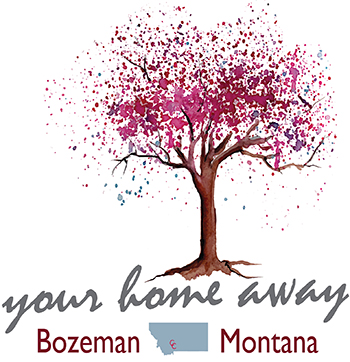
Plant it, grow it, savor it.
Anyone who has enjoyed picking and dining on their own garden produce will agree that there is nothing more appetizing. This blog is the second of a two-part series digging into some gardening learning experiences. Part one focused on the architecture of raised beds and preparing for planting season. Now we will turn our attention to the actual planting and harvesting.
I start with a list of our favorite veggies – no need to grow food that we don’t wish to eat. Then I map out a planting strategy. This enables me to take into consideration the need for sun/shade, watering schedules, and the height/width of the respective plants. Next, I analyze what grows well from seed and which items are best nurtured as seedlings. We’ve had good luck with seeds for most things but in Bozeman’s Zone 4, planting seedlings accelerates the harvest time which can be essential with a short growing season. We find that tomatoes, tomatillos, peppers, and herbs are best started as plants. Greens such as lettuce, kale, arugula, spinach, and the like take off from seeds in just a matter of days.
When I first started gardening, I planted once at the beginning of the season and when the plants were harvested, that was it. Now I plant all summer long, paying attention to the zone, growing schedules, and shifting sun exposure. It’s important to plan for this so that you have an adequate supply of seeds or hit up the local greenhouse before their inventory is picked over – pun intended.
When you are selecting items to plant, think beyond vegetables and herbs. To deter bugs and hungry deer, we plant marigolds around the perimeter of the beds. Sometimes these are outgrown as the veggies mature, but they do the trick as natural repellents. This year, we also planted sweet peas amongst the squash that thrive in a vintage wagon which we’ve converted into a fantastic, raised bed. As summer progressed, these flowers looked brilliant mixed in with the veggie vines. We also planted sweet peas to trellis at the foot of one of the beds which became a spectacular bush that lasted until the first snowfall.
But the true purpose of our gardens was to produce edible items. The bed that had the most sun was home to lettuce, kale, spinach, cabbage, and arugula. The spinach wasn’t too happy here, so we’ll move that to a cooler bed next year. The others were so prolific we could hardly keep up. We did try broccoli and radishes but they bolted really early, probably due to an early hot summer.
Bed two featured tomatoes, onions, peppers, and tomatillos. The tomatillo plant was gorgeous. Unfortunately, it never produced because we learned you need two plants to ensure the blooms will be pollinated. Next year, we’ll plant two tomatillos and enjoy the harvest.
Tomatoes are probably our favorite garden produce. It’s critical to figure out support for tomatoes or other large plants and install it early before the vines get too heavy. While I like planting densely, it becomes difficult to harvest if they are too close together so give tomatoes plenty of room to spread out. The iron bed frames that flank our raised beds (described in part one) work great because I tie heavy twine to make side supports in addition to the tomato cages that I install upon planting. Pruning away the branches that haven’t yet produced fruit helps with the crowding. Dill planted with tomatoes helps with insect control.
Bed three was our herb bed because it received slightly less direct hot sun given the surroundings. Basil was the most prolific, but we also enjoyed cilantro, dill, rosemary, and thyme. As these were harvested, we added in second plantings of spinach, lettuce, and arugula. Truthfully the cilantro probably needed a little more sunshine, so we did a mid-summer planting in the sunny bed which had great results. That’s the main thing we learned over the years – experiment. If one thing doesn’t work, try something else.
Vacation rental travelers should check out local Farmer’s Markets and take advantage of the opportunity to enjoy fresh produce. Bozeman has two weekly Farmer’s Markets which offer wonderful veggies, herbs, fresh flowers, and unique gift items/travel souvenirs to take back home. Guests at Cherry Creek Guest House are welcome to sample the fresh veggies and herbs from our raised beds during their stays.
There truly is nothing like picking and eating your own produce. The fresh smell alone will stimulate any appetite. Some of our favorite garden meals are simple veggie salads, caprese with arugula, cherry tomatoes, and basil, along with stuffed zucchini. If we can’t keep up with the produce, I pickle it (such as the green beans) for future meals. Garden recipes may become a future blog so stay tuned!
The opportunities for your next Montana adventure are unlimited and Cherry Creek Guest House is ready to serve as your home away.
